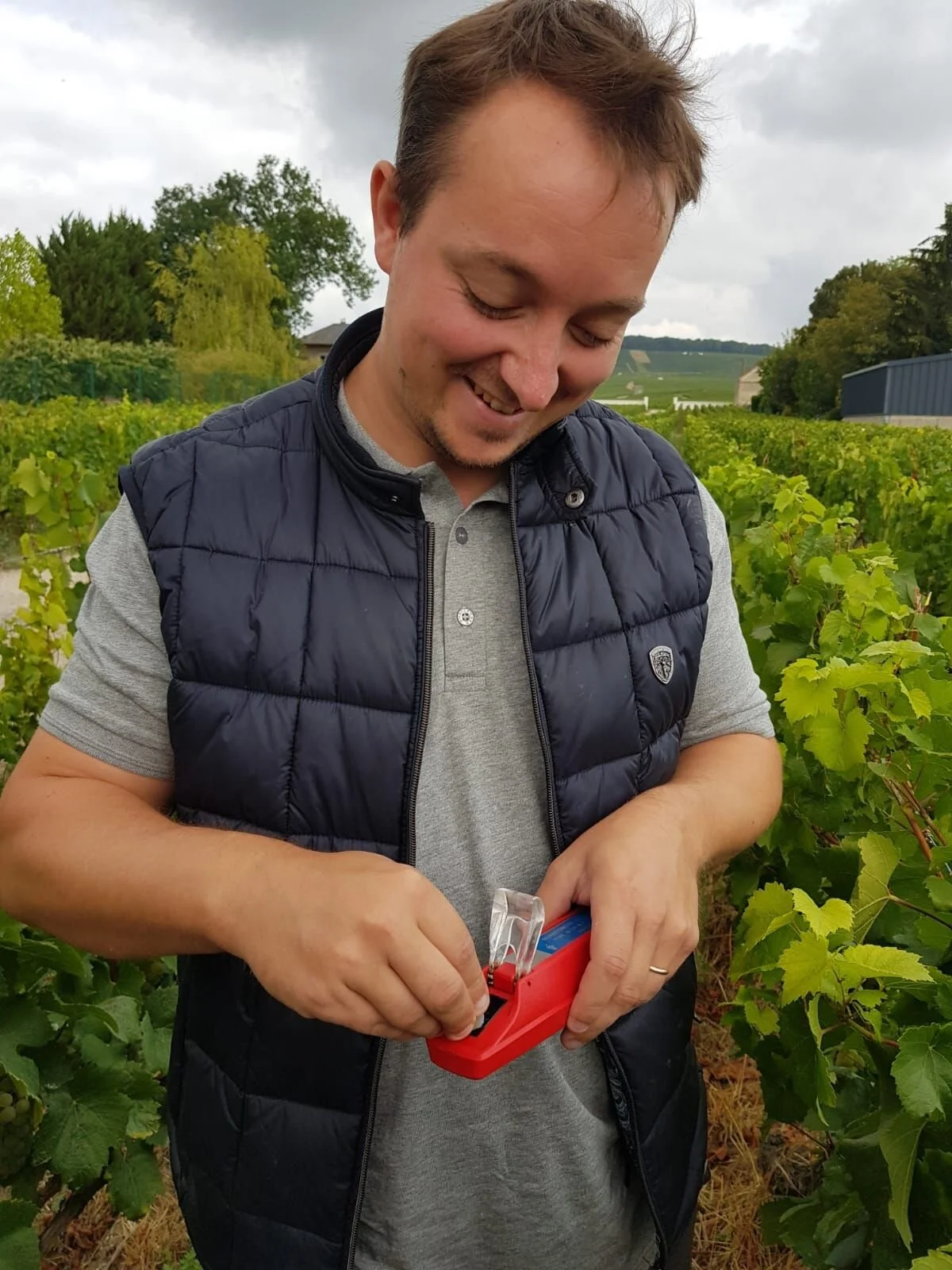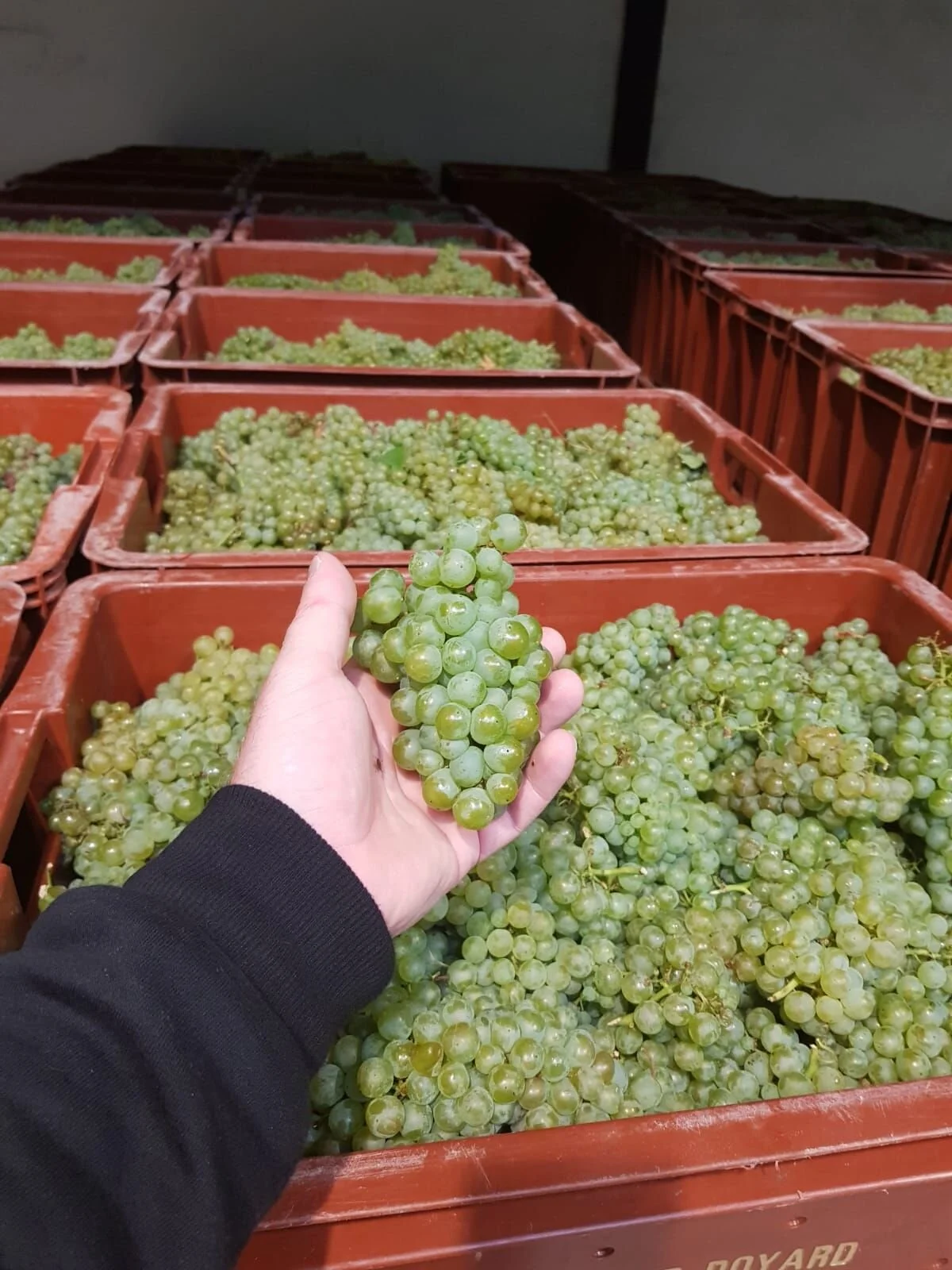Champagne Doyard
The Doyard family have records showing that they were involved in viticulture dating as far back as 1677. The eleventh generation of the family, Yannick, is sure that his research into the family history will unearth an even earlier date.
Guillaume Doyard - Harvest 2020
In 1919 Maurice Doyard was the first in the family to produce wine followed in 1927 by the first estate bottling. Maurice laid the foundations for not only Champagne Doyard but helped to ensure that Champagne standards would be upheld long into the future.
He was President of the “Syndicat General Vignerons” from 1925 to 1944 as well as co-President of what is now the CIVC when it was formed in 1941. Sixty years after the first wines were produced by the family, a 20-year-old Yannick Doyard took the reins of the Domaine.
He set about implementing reasoned viticulture and moving towards an organic approach. The family vineyards now total around 11 hectares of some of the finest plots in Champagne. 10 hectares of Chardonnay vines are in the villages of Vertus (1er Cru), Le Mesnil sur Oger, Oger, Avize and Cramant (all Grand Cru).

The remaining 1 hectare of Pinot Noir vines are in the 1er Cru village of Vertus and the Grand Cru village of Aÿ. In total there are 54 plots spread across six villages and the vines have an average age of 40 years. A programme of only replacing dead vines once a year is in place in order to increase the average age of the vines which give low yields but at the same time produce the finest quality fruit.
Today Yannick still takes a fully active role in the Domaine. He did take a slight back seat around 2013 to start the transition to the twelfth generation of the family Charles Doyard. Sadly, Charles tragically passed away in August 2017. It then fell to Yannick’s younger son Guillaume to change direction and return to work alongside his father full time rather than just working during the harvest as he had done every year.
The whole focus is to produce wines that express the terroir. All cuvées undergo a minimum of 48 months of lees ageing. This includes the Vendémiaire Blanc de Blancs 1er Cru non-vintage. It is about as far from an entry level Champagne as you could imagine.
CHAMPAGE DOYARD RANGE
Vendémiaire - 1er Cru
Blanc de Blancs - Extra Brut. Assemblage of three vintages and made using grapes from old vines (over 40 years old) predominantly from the village of Vertus along with grapes from the Grand Cru villages of le Mesnil sur Oger, Oger, Cramant and Avize. 40% of the wine is vinified in old burgundy barrels. Bottle ageing is usually a minimum of 48 months prior to disgorgment.
Base 2014 & 2015 - RP92 (William Kelley March 2021). Base 2016 - RP92 (William Kelley January 2022). Base 2017 - RP92 (William Kelley August 2022).
Clos de l’Abbaye 1er Cru
Vintage Blanc de Blancs - Extra Brut from a single walled vineyard in Vertus of about 0.5 ha planted in 1956. A selected low yield gives just 1,700 bottles per vintage which is vinified in oak barrels.
2014 - RP96 (William Kelley March 2021). 2015 - RP96+ (William Kelley September 2021). 2017 - RP94 (William Kelley August 2022).
Vintage 2007 - Grand Cru
Vintage Blanc de Blancs - Extra Brut. From vines in excess of 40 years old in the the villages of Le Mesnil sur Oger, Oger, Cramant and Avize. Vinified in oak barrels and finished with a dosage of just 3g/l. Disgorged September 2018 and only available in magnum.
Les Lumières 2008 - Grand Cru
Vintage 2008 - Extra Brut. Assemblage of 65% chardonnay from Avize and Le Mesnil sur Oger and 35% pinot noir from Aÿ vinified in old burgundy barrels. Disgorged in November 2018 having spent just over 9 years on the lees and a dosage of just 0.8g/l.
RP98 (William Kelley March 2021).
En Vieux Fombrés - 1er Cru
Vintage Coteaux Champenois Blanc. Made from a single vineyard of old vines in Vertus and aged in oak barrels. There are usually just four barrels produced in selected vintages.
2015 - RP93 (William Kelley April 2019). 2017 - RP91 (William Kelley March 2021). 2020 - RP93 (William Kelley August 2022).
Révolution - Grand Cru
Blanc de Blancs - Non-Doseage. Assemblage of three vintages and made using grapes from old vines (over 35 years old) from the villages of le Mesnil sur Oger, Oger, Cramant and Avize. 50% of the wine is vinified in old burgundy barrels. Bottle ageing is usually a minimum of 72 months prior to disgorgment. The dosage is zero.
Base 2016 - RP94 (William Kelley August 2022).
Grand Cru
Vintage Blanc de Blancs - Extra Brut. From vines in excess of 40 years old in the villages of Le Mesnil sur Oger, Oger, Cramant and Avize. Vinified in oak barrels
2012 - RP97 (William Kelley March 2021). 2013 - RP95+ (William Kelley September 2021). 2015 - RP94+ (William Kelley August 2022).
Œil de Perdrix - Grand Cru
Extra Brut Rosé. A light colour is obtained from a very short maceration of the pinot noir grapes. An assemblage of 75% pinot noir vinified in oak from Aÿ and 25% chardonnay from Avize vinified in tanks.
2015 - RP95 (William Kelley March 2021). 2018 - RP95 (William Kelley August 2022).
La Libertine
Non Vintage. A very special and rare sweet Champagne. The aim was to recreate the original taste from the eighteenth century when the wines had between 50 and 200 grammes of sugar. La Libertine is a blend of at least 4 vintages and aged for over 12 years in the cellar. Light effervescence and 65 grammes of sugar which is derived from old wines aged in jeroboam.
RP93 (William Kelley March 2021).
Ratafia de Champagne
Non Vintage. A blend of non fermented grape juice from Champagne and distilled champagne which is then aged for at least 18 months in oak barrels.
For more information visit: CHAMPAGNE DOYARD



